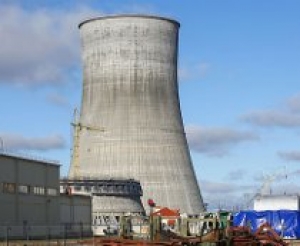Belarusian nuclear power plant passes EU safety tests

The Belarusian nuclear power plant has passed safety tests in
compliance with the European Union standards, BelTA has learned.
Today the Nuclear and Radiation Safety Department of the Belarusian Emergencies Ministry (Gosatomnadzor) will publish a national report on results of the stress tests, which are designed to evaluate the safety of the Ostrovets nuclear power plant. The conclusions prove that the Belarusian nuclear power plant is being built using the Russian Generation III+ design and fully meets the highest international safety standards.
These standards were adopted after the Fukushima nuclear power plant accident in 2011. They are meant to guarantee the safe operation of a nuclear power plant even if the key systems fail or in the face of external impacts. The national report will now be forwarded to the European Nuclear Safety Regulators Group (ENSREG) and the European Commission for a peer review.
The Gosatomnadzor head Olga Lugovskaya underlined that safety is an unconditional priority for all the countries that build or operate nuclear power plants. Belarus shares modern international approaches and recognizes the importance of ensuring a sufficient level of safety of the Belarusian nuclear power plant. “We would like to note that our recent national report on the stress tests confirms the safety standards have been sustained. Since Belarus is a relative newcomer to nuclear energy, Gosatomnadzor considers it important to carry out stress tests not only as a reliable tool for verifying the safety of our nuclear power plants, but also as a way to support the further development of the technical competence of the regulatory body and technical support organizations,” added Olga Lugovskaya.
In turn, Vasily Aksenov, Director of the Moscow Center of the World Association of Nuclear Operators (WANO), noted that WANO wholeheartedly welcomes any activities aimed at improving the safety of nuclear power plants. He said: “We expect the report results to be taken into consideration during the pre-startup peer review before the nuclear power plant goes online. The expert assessment process is one of the biggest strengths of the nuclear industry. It is an important step towards ensuring nuclear safety by sharing the best practices between countries and companies in charge of operating nuclear power plants”.
Earthquake is one of the possible external events that the Belarusian regulatory body has examined. Based on a comprehensive probability analysis, the expected maximum intensity of an earthquake that may happen in the location of the plant is 6 on the MSK-64/EMS-98 scale (not to be confused with the Richter scale which measures magnitude) which is considered the “Operating Basis Earthquake” for the nuclear power plant. However, the Belarusian nuclear power plant reactor units have been designed to rule out accidents and to safely withstand even the extremely unlikely event of an earthquake with the intensity of 8 MSK-64/EMS-98, with the intensity of 7 MSK-64/EMS-98 set as the plant's “Safe Shutdown Earthquake”.
Although floods in the area of the Belarusian nuclear power plants are virtually impossible given that water would have to rise 51.5m above its historical maximum levels, the plant can even withstand that degree of flooding. The analysis and modelling show that in the event of such a hypothetical flood and the consequent submersion of the nuclear power plant rooms below ground level, there would be no disruption to reactor operation.
Even the most extreme weather conditions (with the probability of occurrence less than 1 in 10,000 years), such as air temperatures of up to 50С or wind speeds of up to 62 meters per second, or their combination would not lead to an accident as sufficient safety margins are available, even if temperatures and wind speeds were significantly above these unlikely levels.
The Republic of Belarus volunteered to conduct a comprehensive nuclear safety assessment based on the EU criteria when the country acceded to the joint declaration on comprehensive risk and safety assessments of nuclear power plants (stress tests) in 2011. The country stress-tested its nuclear power plant in 2016 using the European Commission and ENSREG specifications. The national stress-tests report was completed in October 2017.
The Belarusian nuclear power plant is built using the Russian standard Generation III+ design AES-2006 near Ostrovets, Grodno Oblast. The first power-generating unit is scheduled for commissioning in 2019, with the second one to go online in 2020.
VVER-1200 is the world's only Generation III+ reactor design, which is already tried and tested in safe commercial use. The first VVER-1200 unit went online in Novovoronezh in 2016 and the second one is scheduled to go online by the end of 2017. It is now the most common new-build design in the world. It combines the most advanced active and passive safeguards and meets all the post-Fukushima safety standards set by the European Commission, European Utilities Requirements (EUR), ENSREG, and the IAEA.













